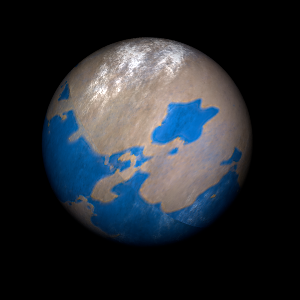|
|
Space Astro
|
Info for exoplanet "Himipo'zamya"
| Scientific (actual) data |
|---|
| Name | Kepler-1717 b |
| Planet status | Confirmed |
| Radius | 0.26666 |
| Orbital period | 30.6528 |
| Semi major axis | 0.2014 |
| Orbit eccentricity | 0 |
| Inclination | 88.89 |
| Discovered | 2017 |
| Updated | 2024-06-09 |
| Tzero tr | 2454970 |
| Impact parameter | 0.682 |
| Temperature (kelvin) | 780 |
| Publication | Announced on a website |
| Detection type | Primary Transit |
| Alternate names | KOI-353 b, KOI-353.022 |
| Star name | Kepler-1717 |
| Right ascension | 295.21° |
| Declination | 49.56° |
| Mag i | 13.251 |
| Mag j | 12.455 |
| Mag h | 12.263 |
| Mag k | 12.228 |
| Star distance | 1008.79 |
| Star metallicity | -0.06 |
| Star mass | 1.37 |
| Star radius | 1.517 |
| Star sp type | F5IV-V |
| Star age | 0.33 |
| Star temperature | 6591.89 |
| Star alternate names | 11566064, KOI-353, 2MASS J19405104+4933438 |
| Wikipedia article | Kepler-1717 b |
Back
| |
| Fictional info (?) |
|---|
| Suggested name | Himipo'zamya |
| Planet type | Planet |
| It is the coldest planetary atmosphere in its solar system, with a minimum temperature of 55°K (-218°C), and has a complex, layered cloud structure with ammonia thought to make up the lowest clouds, and oxygen the uppermost layer of clouds.
A prominent result is the "great red spot", a giant storm that is known to have existed for centuries since it was first seen by telescope. |
| Atmosphere | Oxygen | 71% |
| Ammonia | 28% |
| Carbon monoxide | 0.0034% |
| Argon | 0% |
| Atmospheric pressure | 50 bar |
 |
| No known satellites |
| Google search for Himipo'zamya |
|
Website by Joachim Michaelis
|
|
|
|